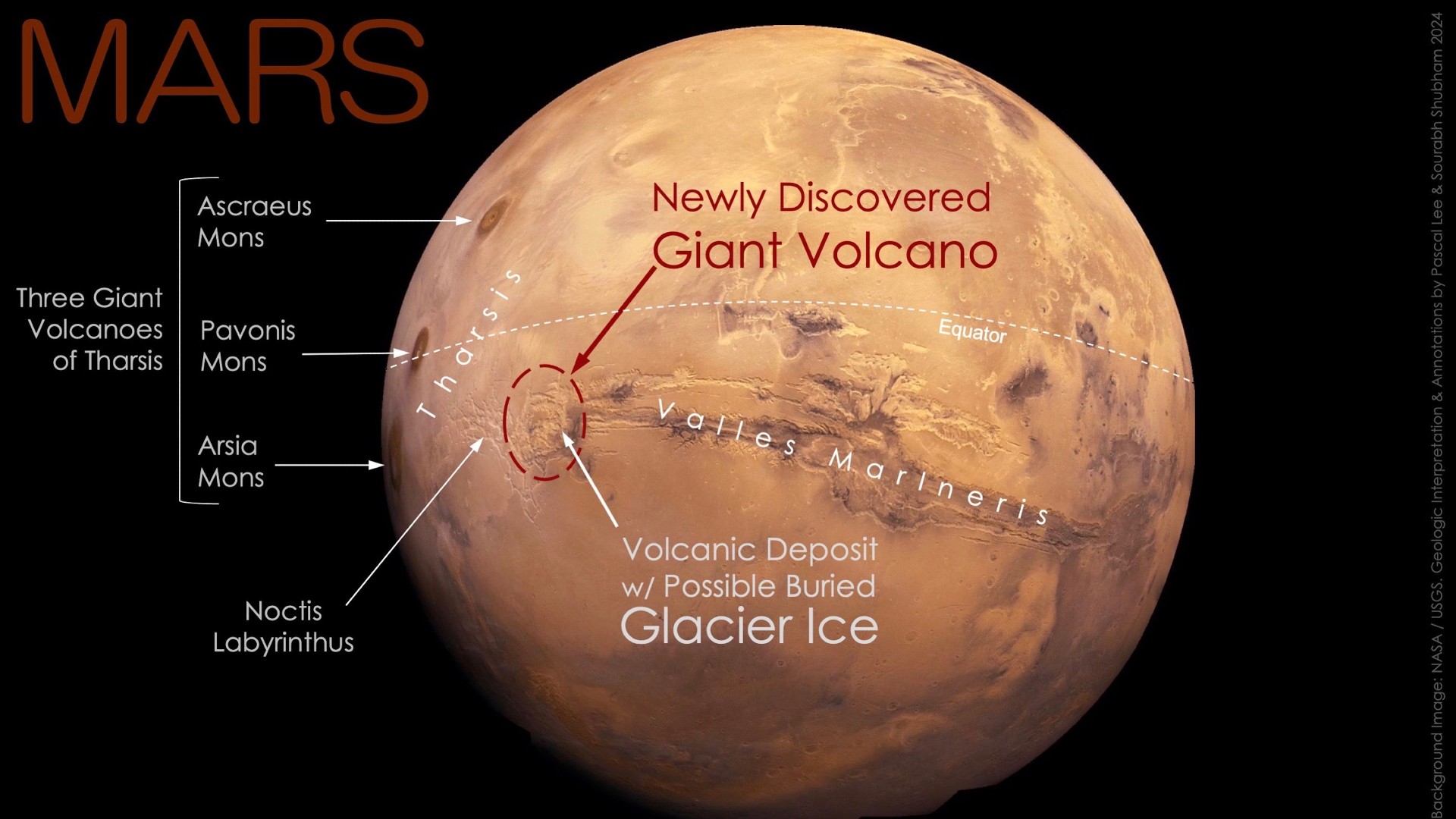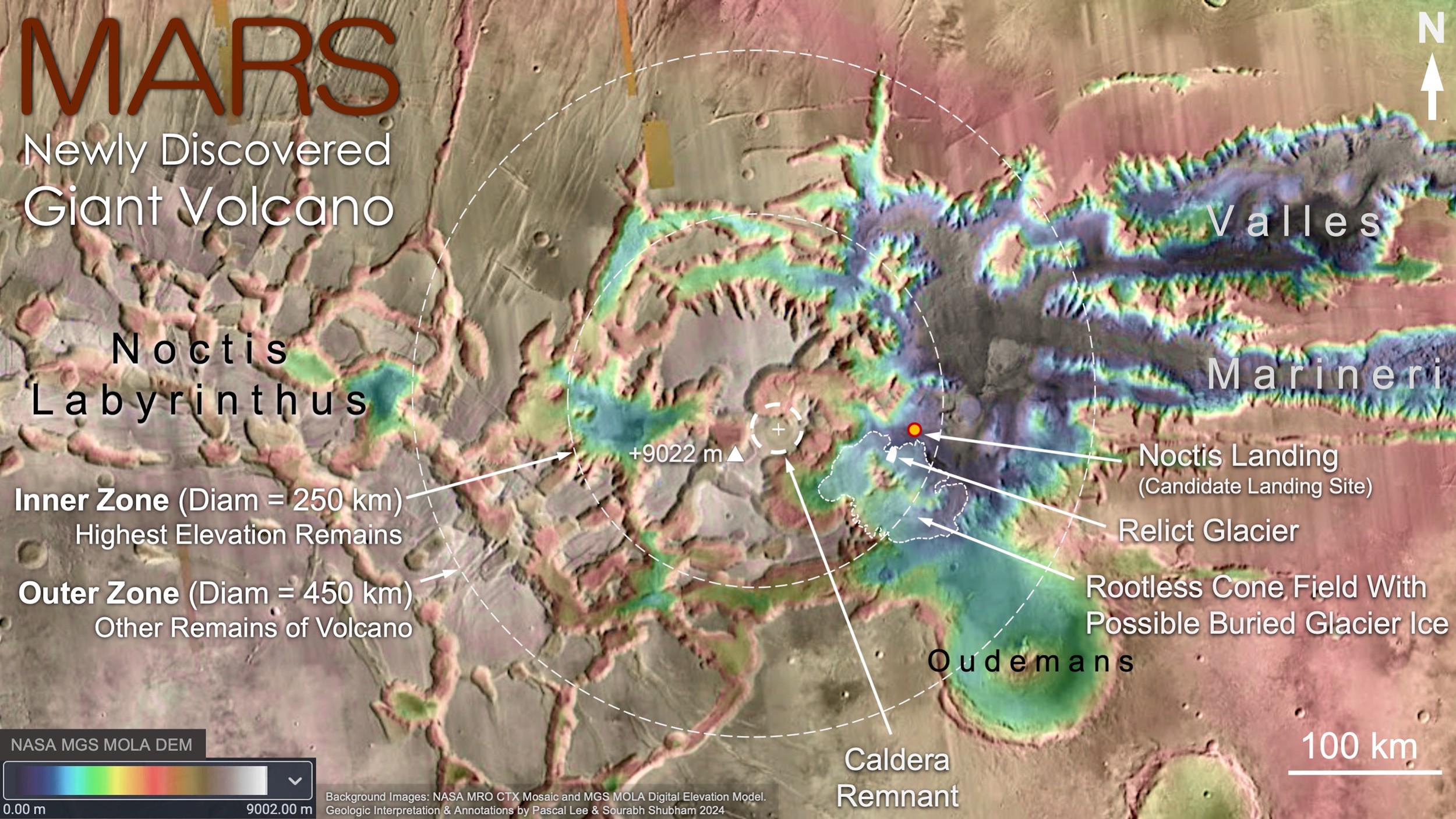Gargantuan volcano on Mars found hidden 'in plain sight,' and it could hold potential signs of life
A newly discovered volcano near Mars' "Labyrinth of Night" could be a "prime" spot to search for life on the Red Planet, scientists say.

Scientists have discovered a giant volcano on Mars that has been "hidden in plain sight" for more than 50 years.
The volcano is around 280 miles (450 kilometers) wide and more than 29,600 feet (9,000 meters) high. It is located in the eastern part of Mars' Tharsis volcanic province near the planet's equator, scientists revealed at the 55th Lunar and Planetary Science Conference, held in Texas between March 11 and 15.
The team also spotted what appears to be the remains of a sheet of buried glacier ice near the base of the volcano. They believe this could make the volcano a "prime location" for astrobiological research and the search for signs of alien life.
"This combined giant volcano and possible glacier ice discovery is significant, as it points to an exciting new location to study Mars' geologic evolution through time, search for life, and explore with robots and humans in the future," the scientists said in a statement.
Spacecraft orbiting Mars have been unknowingly imaging the volcano ever since NASA's Mariner 9 was sent to the Red Planet in 1971. However, the volcano is so deeply eroded that it has slipped under the radar, until now.
"We were examining the geology of an area where we had found the remains of a glacier last year when we realized we were inside a huge and deeply eroded volcano," project leader Pascal Lee, a planetary scientist with the Search for Extraterrestrial Intelligence (SETI) Institute and the Mars Institute based at NASA Ames Research Center, said in the statement.
Sign up for the Live Science daily newsletter now
Get the world’s most fascinating discoveries delivered straight to your inbox.

The volcano, which has yet to be officially named, is located in one of Mars' most iconic regions, at the boundary between the maze-like Noctis Labyrinthus, meaning "labyrinth of the night," and the gigantic canyons of Valles Marineris, or Mariner Valley. The volcano is believed to have been active from ancient times until relatively recently, given its "gigantic size" and "complex modification history," the team said.
The volcano has a central summit area marked by raised, flattened areas called mesas, which form an arc shape, sloping downwards. The slopes around the mesas spread for 140 miles (225 km) in different directions. Near the center of the volcano, there appears to be the remains of a collapsed volcanic crater that would have once hosted a lava lake. There are also the remains of lava flows, as well as volcanic and hydrated mineral deposits, around the edge of the volcano.
Many questions about the volcano remain, including exactly how long it has been active and whether it still is. If the volcano has been active for a long time, it's possible that the combination of sustained warmth and water from the ice sheet below the volcano may have created the perfect conditions to support life, the authors said.
The findings have yet to be published in a peer-reviewed journal. In the meantime, further details of the discovery can be read in a summary document from the conference.

Emily is a health news writer based in London, United Kingdom. She holds a bachelor's degree in biology from Durham University and a master's degree in clinical and therapeutic neuroscience from Oxford University. She has worked in science communication, medical writing and as a local news reporter while undertaking NCTJ journalism training with News Associates. In 2018, she was named one of MHP Communications' 30 journalists to watch under 30. (emily.cooke@futurenet.com)









